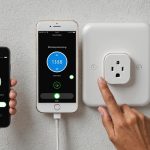Understanding Smart Water Filtration Systems
Smart water filtration systems represent the future of home water purification technology. These innovative systems utilise sensors to monitor water quality, automatically adjust purification processes, and efficiently remove contaminants. This technology ensures that households have access to clean, safe, and fresh water at all times.
Modern water filtration systems are defined by several key features:
This might interest you : Harnessing ai-powered mobile applications for innovative mental health tracking and support
- Automated Monitoring and Adjustment: Integrated sensors continuously observe water quality, immediately responding to changes by adjusting filtration levels to maintain high water purity.
- Connectivity and Integration: These systems seamlessly connect with existing smart home technology. This integration allows users to monitor and control water purification processes remotely via apps, enjoying immediate alerts regarding any issues.
- Energy Efficiency: By adopting smart technology, these systems operate on-demand, leading to reduced water wastage and lower energy consumption.
Integrating filtration systems with smart home technology further amplifies their benefits. It enhances system integration, where homeowners can have complete oversight over various elements of their home environment. This connectivity ensures not only healthier water consumption but also contributes to a comprehensive, sustainable, and efficient smart home ecosystem. With these advanced features, smart water filtration systems stand out as key players in modern home innovations.
Connecting Your Water Filtration System to Smartphone Apps
Integrating your water filtration system with a smartphone app can streamline how you monitor and manage water quality. Here’s a quick guide on how to set it up:
This might interest you : Boost your energy savings: the ultimate smartphone guide to smart plug management and monitoring
Step-by-Step Installation and Setup
-
Download the App: Locate the corresponding app for your water filtration system in the Google Play Store or Apple App Store. Ensure it matches your system’s brand.
-
Create an Account: Open the app and create a user account. This will often be necessary for accessing all features.
-
Connect the Device: Enable Bluetooth or Wi-Fi on your smartphone. Follow the app’s on-screen prompts to connect the water filter.
Compatibility Considerations
Ensure your smartphone model supports the app. Older models might lack necessary Bluetooth or app compatibility. Always check the app’s requirements beforehand to avoid frustration.
Common Connection Issues and Troubleshooting
Connection issues can arise, such as failure to sync the water filter with the app. Ensure your device is within range and restart both the phone and the water filter device. If problems persist, consult the app’s help section or the manufacturer’s website for additional assistance. Implementing these troubleshooting steps effectively addresses most setup challenges.
Optimizing Water Filtration System Performance
Enhancing your water filtration system performance can lead to significant improvements in water quality and operational efficiency. One effective approach is optimizing filtration settings through apps. These applications allow you to tailor the filter operations to specific needs, ensuring the system runs smoothly and efficiently. By doing so, you can maximise the performance enhancement of your system while minimizing energy and resource consumption.
Analyzing water quality data is crucial for making informed decisions. By continuously monitoring this data, you can identify patterns or anomalies that may need addressing, thereby improving overall system performance. Integration of smart technologies enables you to receive real-time updates and insights, empowering you to act promptly when issues arise.
Scheduling maintenance and filter replacement notifications ensures that your system remains in peak condition. Regular upkeep helps avoid potential inefficiencies and prolongs the lifespan of your filters. Apps can automate this process by sending timely reminders based on the system’s operational data and condition, which reduces the need for manual checks and saves time.
By employing these efficiency tips, you can achieve better water filtration optimization, leading to cleaner water and enhanced system longevity.
Benefits of a Smart Water Filtration System
Smart water filtration systems offer significant convenience benefits, enhancing how we manage our water quality. By integrating smart technology, these systems provide hassle-free operations, such as automatic maintenance alerts and remote monitoring via mobile apps. This means you can effortlessly ensure your water quality remains optimal without constant manual checks or interventions.
The health advantages of using optimized water filtration are substantial. Advanced systems effectively remove contaminants, providing cleaner, safer water for your household. Access to purified water reduces the risk of waterborne diseases, supporting better overall health for you and your family. Some systems are even capable of retaining beneficial minerals, furthering their health-promoting properties.
From a financial standpoint, smart water filtration systems enable energy and cost savings, as they are designed to operate efficiently with minimal waste. Smart technology perks include the ability to monitor water usage patterns, thus helping you identify and reduce wastage. Additionally, some systems offer features like real-time updates on filter lifespan, allowing timely replacements and avoiding unnecessary expenses.
In summary, smart water filtration systems present a multitude of benefits, enhancing convenience, security, and savings, while ensuring your water remains as pure as possible.
Maintenance and Troubleshooting of Smart Water Filtration Systems
Regular maintenance is essential for the longevity of smart water filtration systems. To ensure your system operates efficiently, follow these maintenance tips: consistently check and replace filters as needed, clean sediment from screens, and inspect for leaks or unusual noises. By adhering to these practices, you maintain optimal functionality and prevent major issues.
When encountering problems, having a troubleshooting guide simplifies the process. First, confirm the system is powered correctly. If water flow is insufficient, inspect the filters and tubing for blockages. In cases of persistent noises, ensure all components are installed securely. Simple diagnostics can often identify the issue, saving you time and resources.
Modern systems are often equipped with apps, providing helpful features for system upkeep. Utilize these apps for maintenance alerts, ensuring you’re informed of the next filter replacement or required servicing. Additionally, the apps offer troubleshooting support with step-by-step guidance tailored to your system.
By combining regular maintenance practices, using troubleshooting guides, and leveraging app features, managing your smart water filtration system becomes an easier task. Staying proactive in these areas enhances the system’s efficiency, offering continuous access to clean, filtered water.
Comparing Smart Water Filtration Products
In the competitive landscape of smart water filtration systems, selecting the right product involves a careful balance of features, efficiency, and value. Reviews highlight several top contenders, each boasting unique attributes.
System Features
When examining product comparison outcomes, it’s crucial to scrutinize system features. Look for comprehensive filtration stages, integration with smart home systems, and ease of maintenance. These features not only improve water quality but also enhance user convenience.
Pros and Cons
Understanding the pros and cons of various smart water filtration products can be pivotal. For instance, some advanced systems offer high precision in contaminant removal but demand higher maintenance efforts or costs. On the other hand, simpler systems might be more user-friendly but less effective in eliminating minute particles.
Research and smart filtration reviews can guide informed decisions. Highly rated systems usually receive praise for reliability and innovative technology. However, they might come with a heftier price tag. Weighing the pros and cons against personal needs and budget ensures you select a system that aligns with your priorities.
Deciphering these key features can yield a rewarding decision in choosing an efficient and smart water filtration solution tailored for your home.










